Listen to all the tales others will tell you, but you will never know what a place is like until you experience it for yourself. We spent six months traversing Mexico and now I can say with certainty: I did not feel unsafe.
You can listen for forever to someone telling you what a place is like. The list of things that other people know is unending, a collection of rumors that others have heard that must somehow add up to wisdom. Travel defies these hand-me-downs, and gives you a chance to sift through what others tell you and see for yourself what a place is like. You get your own story, your own personal experience.
You will never know what a place is really like until you have experienced it. Gone there, tried it, collected experiences that help you form an educated opinion. Nearly everyone we met before we crossed the border into Mexico told us something along the lines of “Mexico is dangerous,” “Be careful in Mexico,” or “I heard about this one guy down in Mexico…” (followed by something negative that happened to that guy). All this time, I tried not to let stories like these make me nervous and focused on what I believed in: I didn’t know if Mexico was dangerous, but the only way to find out was to go there and see it for myself.
Of course, your experience will not mirror mine; factors like when you go or who you meet – or even just who you are – will make your experience uniquely your own. I can only speak here for myself.
Spoiler alert: we did not experience Mexico as dangerous. In fact, we barely met an unfriendly person during the six months we spent traversing the country.
How dangerous is dangerous?
Back on Baja California, we were couchsurfing in La Paz. I asked our host, in my Very Bad Spanish, why all the houses had bars on the windows. I had been to Latin America before and knew it was a common sight, but I had never actually asked anyone about it. “Everybody has them,” she told me. I nodded and asked, “But do you need them? Or does everybody just think they need them? Are they actually necessary?” She thought for a moment. “No, you need them, you’ll get robbed if you don’t have them.”
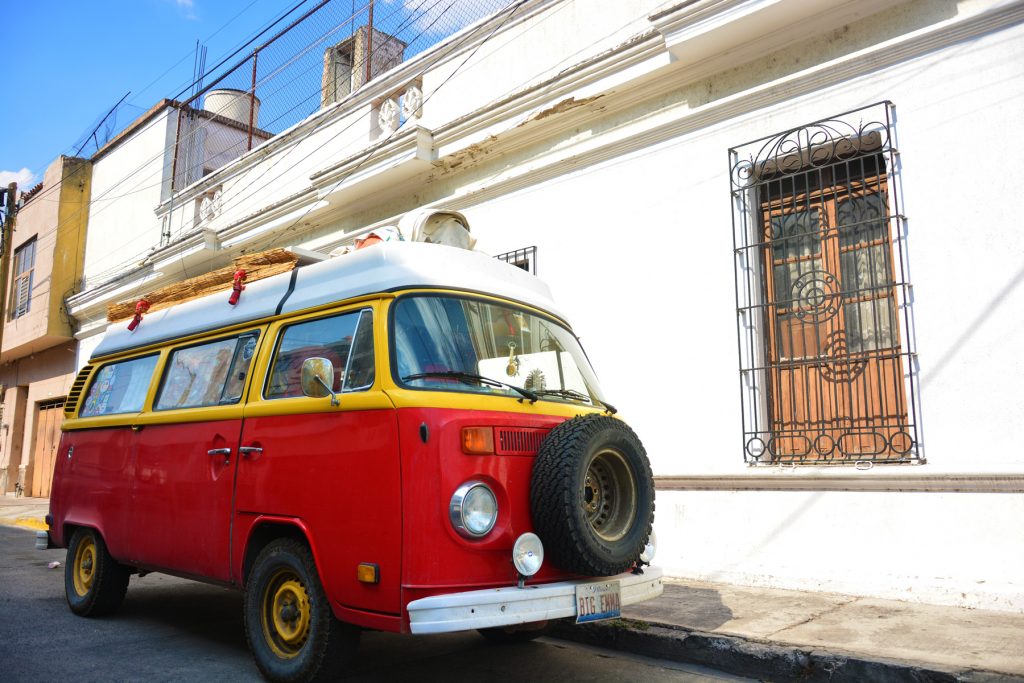
Barred windows in Guadalajara, Mexico.
But my question was unfair. Where do people even draw the line between needing something and the perception of necessity? How are you supposed to tell the difference between the two? When does one turn into the other, and does it ever turn back? I guess you never know, unless yours is the house that didn’t have bars on the windows, you got robbed, and the burglar left a note saying, “I only came here because you didn’t bar your windows”.
You will never know, actually, if you need a safety feature like barred windows until you find out that you do. That is why, after our Bus got broken into in Guadalajara, we added a number of extra locks to our cabinets and to the windows that the robbers used to climb inside. The ironic thing is, though, that I will never know if those new locks worked to deter a thief – I will only ever know if they did not.
Our route through Mexico: states and tolls

German-style breakfast with Sven’s family. And Big Emma.
After crossing over from Baja, we traveled through the Mexican countryside, from Sinaloa to Nayarit, on to Guadalajara in Jalisco, and down towards Puebla. We entered Oaxaca from the northwest and continued south down to the coast. After staying for over a month in Puerto Escondido, we headed back up towards San Cristóbal de las Casas in the mountains of Chiapas. From there, we drove towards the Yucatán Peninsula through Quintana Roo and the Riviera Maya before spending two weeks on the northern Yucatán coast with Sven’s family. We returned to Quintana Roo and left Mexico from there, driving south into Belize.
We had heard that it was safer to take toll roads (cuota). There are not very many exits along tolls, which makes it harder for roadblocks or carjacks to happen there. There are almost no toll roads on Baja, but we tried one out when we got to Jalisco. Not actually because of safety concerns; Sven just wasn’t feeling good, and we wanted to get where we were going a little faster (toll roads also let you skip hundreds of irritating speedbumps, or topes).
After two hours of driving cost us almost $20 USD (an absurd amount of our Mexico-budget), we decided we hated Mexican cuotas. Apart from a similar stint on the Yucatán, we never took a toll road again. By Mexican law, there always has to be a free alternative to a toll road. We crossed nearly all of Mexico on free, unpaid roads that took us through villages and around towns. We never had any problems. Not a one. In our experience, you do not need to take toll roads to stay safe in Mexico; you might only want to use them to save some time. In many places, there are no toll roads; the free option is all you’ve got.
Caution is a important, wherever you are
However, I need to add to that: we are careful travelers, and do not tend to go to places we consider high-risk. Over and over again, we had heard that the Mexican states of Michoacán and Guerrero were not the safest places to be. Along with some of the northern states, they have the roughest problems with drug and gang violence and police clashes.
The US Travel Advisory currently completely prohibits travel to Guerrero for US government personnel (but, in my opinion, they are not always the best source of information for safe travel. If you lose yourself on their site, you will realize the whole world is dangerous). We were also told that the state of Veracruz is somewhat dangerous in certain areas. We decided to avoid these states; partly because there was not a lot we really wanted to see there, and partly because we could go a different way. We don’t believe in playing with fire.
That being said, I do realize it contradicts what I said above: you never know until you see it for yourself. I have just blatantly assumed that states like Guerrero or Veracruz are dangerous without first-hand knowledge of having been there.
Tourism attracts people to certain areas; be it due to actual attractions, beautiful locations, a well-maintained tourist infrastructure, off-the-beaten-track appeal, or whatever else people like. Tourists tend to hang around the places that are attractive to them; if it is not attractive, they do not stay (or stop in the first place). Just like any place, anywhere in the world, I would avoid the bad part of town, tourist or not.
I tend to stay in the places where I feel safe, and where I can find comforts and resources that I need. Part of this is about the natural flow of travel, but a part is also about common sense. Don’t put yourself in risky situations is something that applies to anybody, wherever you may live. It applies to travelers just the same, and I do not feel the need to go to Guerrero at the moment in light of this fact.
However, we personally know many travelers who did go through these parts of Mexico. The coastal highway – which goes through both Michoacán and Guerrero – is the road for surfers, and all travelers who do the Panamericana for the best surf spots do not skip these parts of Mexico. Everyone we have heard of traveling there has been fine. On the other hand, we also met one woman in Quintana Roo from Acapulco (in Guerrero), who told us we should stay away from there. “The Yucatán is much better,” she told us, “you don’t have to worry here.”
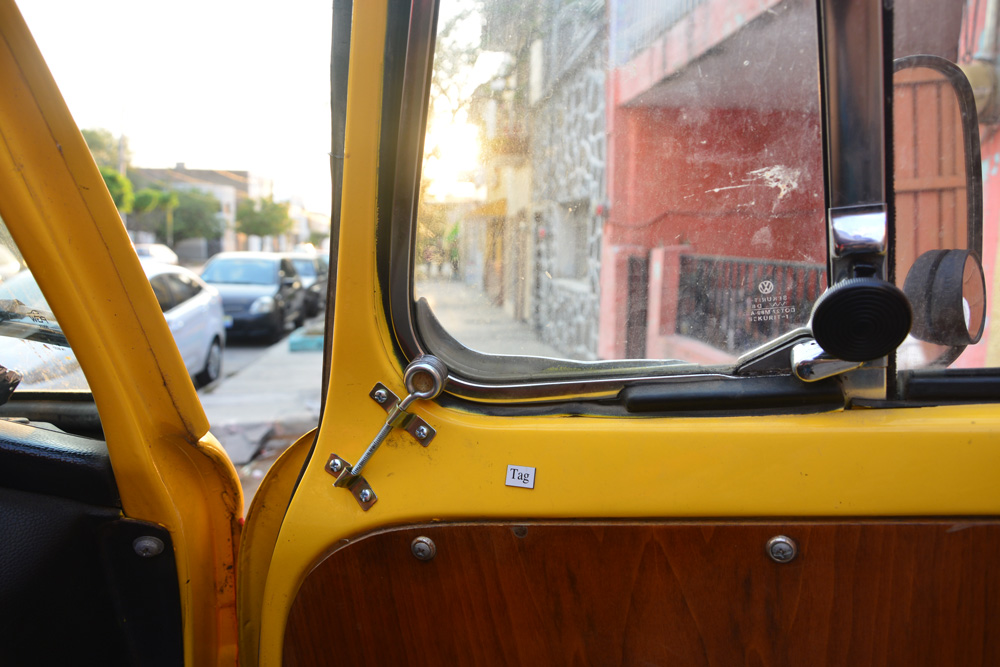
The self-made lock we added to our vent windows to prevent further break-ins. Unfortunately, the window crank is located directly beneath these windows, a perfect target for thievery.
Safety is only a matter of perspective
Our months of experience gave us a feeling of relative safety traveling through Mexico. Eventually, we began to be less wary of the country we had heard so many horror stories about. The bad thing about safety, however, is that it is not a fixed state. As safe as you may feel, it may be just an illusion, a mirage to fool you.
Just as we felt we had figured out the topic of Safety in Mexico, our roommate in Puerto Escondido – a fellow overlander – came over to the breakfast table with some daunting news. A traveler she had met a few months earlier had just been carjacked in Veracruz. Everything he had was gone and the carjackers had shot him in the leg in the process. He was okay, but was flown back to his home country of Israel to recover.
Around the breakfast table we looked at each other in disbelief, and immediately our walls were back up, we were thinking about which roads we should drive, what precautions we needed to take, if we needed to hide our laptops while we drive, if our Canadian bear spray was in reach of the driver’s seat.
Within the blink of an eye, all of us were cautious again. Were we kidding ourselves? We thought. Was Mexico really as dangerous as everyone believed? Had we just been lucky up until now? We felt the need to reassess our opinion of Safety in Mexico sitting around that table.
This was – and continued to be – the only story of someone that we, through our friends, actually know who had encountered serious problems in Mexico as a traveler.
Bringing these uncertainties back to the forefront highlights one of the things that characterized our travels through Mexico: we felt like we had to be aware of safety concerns. Because of all the things you hear, of everybody’s concerns regarding the possibilities of danger, you keep that in your head. These thoughts dictate where you make camp, what roads you want to take, how many locks you put on your car and how often you actually lock them. These were not things that would play in the back of our heads on a typical day traveling through the US, Canada, or Belize. More than anything actually happening to us, it was these thoughts that plagued us while we traveled through Mexico.
Police corruption, military checkpoints, and civil blockades
Another topic comes up when travelers think of Safety in Mexico: police corruption. We, like many other good overlanders, made laminated copies of our IDs, hid our passports deep in the corners of our car, and tried to never leave extra cash or electronics lying around. Many travelers are afraid of getting stopped by the police. Not because they are usually doing anything wrong, but because they are scared of crooked cops looking for bribes from gullible tourists. One of the common fears is handing over original documents like driver’s licenses or passports, and only getting them back for a donation. Another is being accused of a bullshit charge, which can also be solved via a donation to the accuser.
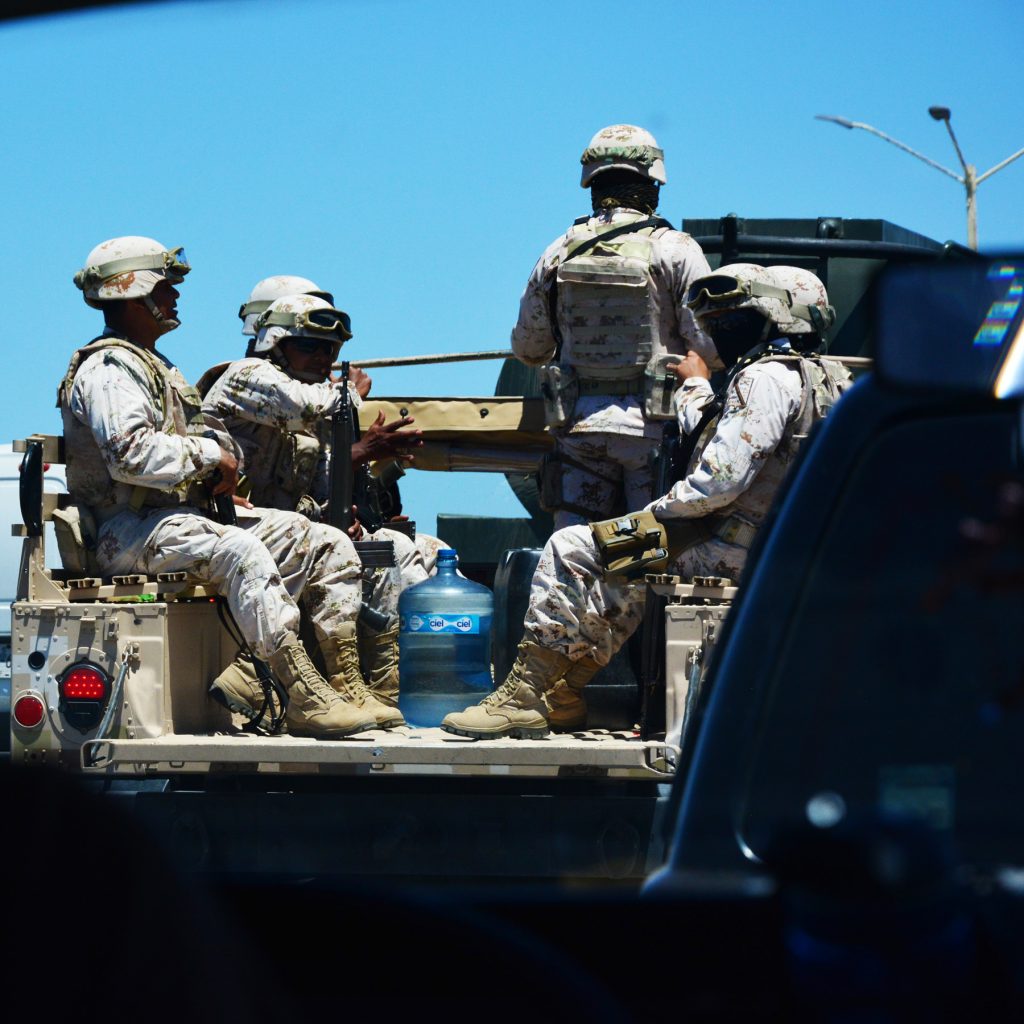
Military vehicle on Baja California.
We never encountered anything of the sort. We experienced the most military checkpoints on Baja, and the most police checkpoints on the Yucatán Peninsula. We crossed numerous state borders, went through many police and military checkpoints, and got stopped by a cop once. The cop seemed to be doing a routine check; although we were definitely nervous, he took a look at all our paperwork and let us go on our way. He was both professional and friendly. At checkpoints, our car never got searched more than opening a door or officers looking in through the windows. One cop even said, “Oh you’re from Germany? I love Germany!” and waved us on with nothing more than that.
Civilian blockades were also an issue, almost exclusively in the state of Chiapas. Once or twice, it was someone blocking the road with a rope or chain and asking for money. Once it was a little boy. We gave him coins and gummy bears and went on our way. Once it was a group of village men with a board decorated with nails that they strung across the highway. The event pissed me off, but for about $1 USD, the problem is easily solved. I might not like it, but I imagine they can genuinely use the money.

The Mexican flag in front of a church in San Blas, Nayarit.
Experiences are individual – communication is key
In Tulum, we met a few other overlanders. After a day excursion, their group came back exhausted. They had been stopped by the cops, who had attempted to plant a bag of seeds in their car while searching it, claiming it was marijuana. According to the travelers, the cops then refused to give them their IDs back and wanted to take them to the station, which the travelers adamantly refused. Then, along came two others – both Mexicans, also staying at our campground – who proceeded to talk to the cops and eventually everyone went on their way with no further problems.
According to the the travelers, their Mexican friends saved the day. According to the Mexicans (who Sven can speak with in Spanish), the whole issue was simply a misunderstanding about IDs because the travelers didn’t speak much Spanish. It makes you wonder if many of the fears that travelers have regarding crooked cops stem from simple miscommunications.
We felt safe in Mexico
Safety is always a matter of perspective, and a matter of experience. It is neither an illusion, nor is it a guarantee.
From the perspective of white, Western travelers in an obvious overlanding rig, we felt safe in Mexico. We were cautious, and tried our best to use that skill that people call common sense. We also spoke in Spanish and thought about how and where would travel. We payed for camping a lot more often than before; in the States, we barely ever did, while in Mexico it became the norm.
Despite the precautions we took, the conclusion is a satisfying one: we did not experience a dangerous Mexico. That is not to say that others will not, but we are among the majority of travelers who had a hell of a time. The best advice we can give others is to make sure all your windows have locks. And learn Spanish.
Every country is dangerous; every country is safe. The exception to this rule – as I see it – are countries that are in the midst of civil unrest or war, but those are probably not countries you will be eager to travel to in the first place. The nearest big city to where I come from is Chicago. There are places in Chicago that I would avoid, whether I am a tourist or not.
Our experience of Mexico was no different. But at least I can now say it for myself.
Cover image by Anna Lünig.
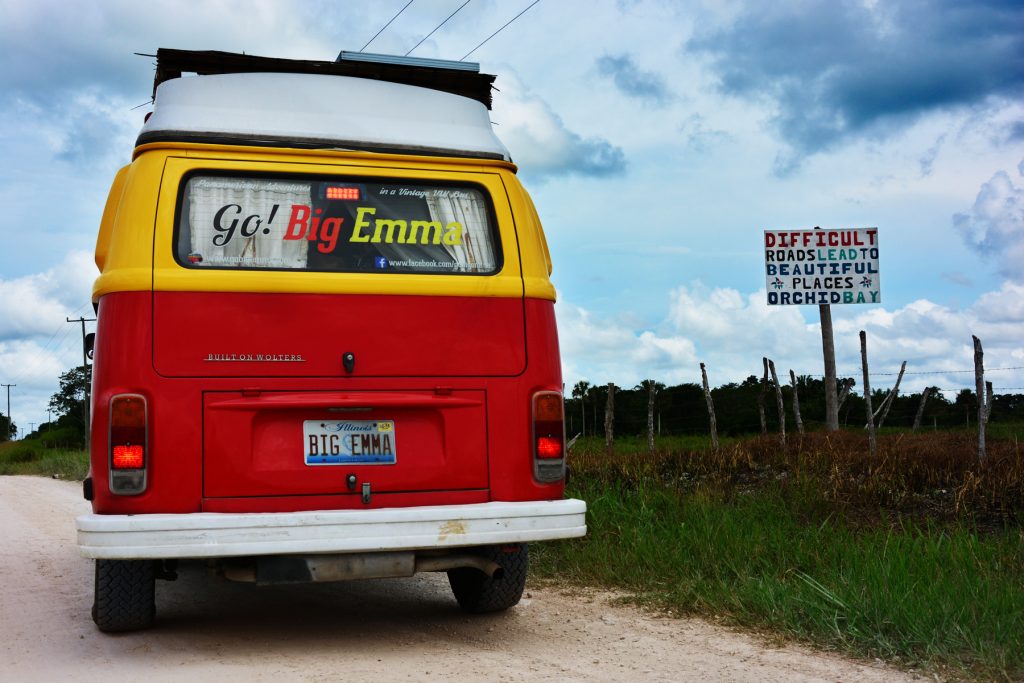



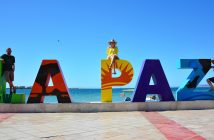
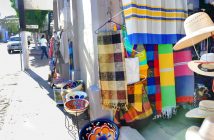
2 Comments
Your insights demonstrate solid common sense. Love you!
Yea! I’m glad to hear from you guys again! I’ve been missing my weekly Big Emma fix.